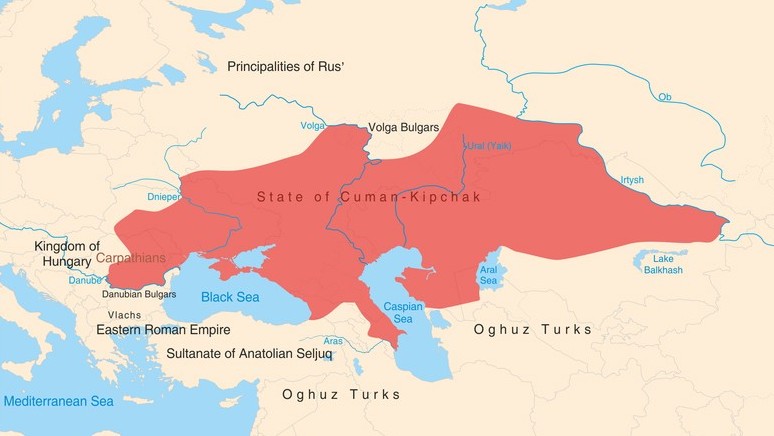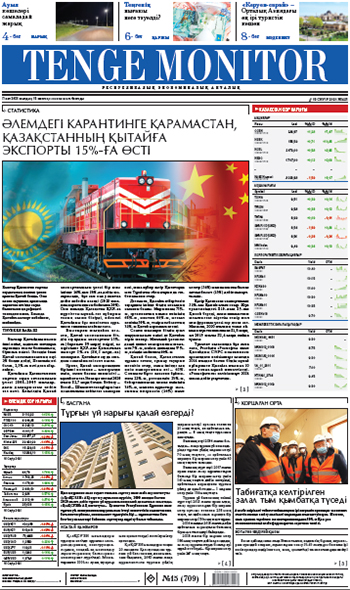- Атамекен
- 13 Тамыз, 2020
Kazakhs have had a long history of establishing nation State of their own

 (The beginning part is in the previous issue)
(The beginning part is in the previous issue)
Their scholars have developed an all-human system of cultural and civilizational hierarchy, since civilization purportedly is an inherently hierarchical concept. They tended to view Inner Asian nomads in a quite negative light, even though their opinions on the latter ones weren’t unequivocal. For example, scholars such as Thornwald and Toynbee believed that nomads were unable to create a civilized society and state without help from the outside. The prevailing view among European and American researchers has been and still is that nomadic communities would not be able to get on the road of civilizational development without the help from sedentary populations. Based on that, European and other Western communities got used to viewing the likes of us through the lens of cultural supremacy. And their representatives have become accustomed to being sceptical about our perspectives on history, any and all attempts by us to glorify the Eurasian great nomadic historic figures as our national heroes.
One of them, entering into a dispute over the issue of language with his opponents, ethnic Kazakhs, who had mentioned the name of Attila in support of their allegations, just blurted out those words: «You would’ve recalled Atlantis…».

That is the context in which no one seems irritated by the fact that the Hungarians consider themselves to be descendants of the Huns and often name their children after Attila, while the Turks, regarding themselves as the heirs of the Byzantine and the Turkic-Mongolian legacies, which were completely incompatible with each other, quite successfully manage to «sit» on two chairs and proudly bear names like Khubilai. Nobody is snapping at them because of that. Nobody is opening the eyes of the world to their fallacies.
Although it would seem quite clear to all that it simply is self-deception to believe there can be some kind of relationship between the average Turk, who is one hundred percent Caucasian, that is to say, an exemplary European, and the Chinese emperor of Mongolian origin, between a contemporary inhabitant of Hungary, historiography of which has been claiming that even later newcomers to this country from the East, the Mongols and the Ottoman Turks, greatly contributed to the nation’s lag behind its peers in Christian Europe, and Attila, whom Christianity considered the most dangerous threat to the western world.
THE CLASH OF CIVILIZATIONS
It’s not like we are going to debunk established ideas of some sort here, even if they are very paradoxical. But the fact remains: the Huns, when they had first appeared in front of the Europeans by the late antique period, created a wave of extremely wild horror among the latter ones just because they looked completely different from all the known (in the Mediterranean) human populations of the time.
These were Mongoloid Asians, who had never before been encountered by the inhabitants of the Greco-Roman world. European Christians therefore refused to regard those ones as human beings and called them «the fiends of hell». Many authors from the contemporaries of that distant era to Arthur Conan Doyle reflected such an attitude in their works.
In a word, the (physical) features of those newcomers to Pannonia from the Far East, were not consistent with the then European community’s understanding about what a human being should be. Late antique and early medieval authors were quick to identify the Huns as the descendants of Gog and Magog, peoples with small narrow eyes, flat thick noses and wide faces. To the West as whole, they «were an army from hell, especially in countries where witnesses had seen the swift adversaries with their yellow faces, slanted eyes and thin flowing beards». A typical West European account noted that «a certain barbarous people, who are called Tartars, marched from the eastern limits long ago and in a warlike manner subjugated many regions to their imperium» (E. Mari Historiarum Auctore Johanne de Columna, in Bouquet, XIII, 114-15).
Besides, the racial stereotypes in medieval Christian Europe and its neighboring regions appear to have been extremely conservative. It is now considered that racism was clearly a phenomenon of the modern age, largely confined to those regions dominated by Europeans. That view seems to be overly simplistic. Although the term «racism» is relatively young, and first appeared in the 1920s to characterize the National Socialist ideology in Germany, the phenomenon that is now denoted by this word appears to have first emerged much earlier. Roman soldier Ammianus Marcellinus described the Huns as «so prodigiously ugly and bent that they might be two-legged animals, or the figures crudely carved from the stumps which are seen on the parapets of bridges».
The only extant description on Attila’s appearance made by Priscus of Panium, a 5th-century Roman diplomat and Greek historian and rhetorician (or sophist), is as follows: «short of stature, with a broad chest and a large head; his eyes were small, his beard thin and sprinkled with gray; and he had a flat nose and a swarthy complexion, showing the evidences of his origin». That description suggests, that Attila’s physical appearance was most likely that of an Eastern Asian, Mongolic or Turkic man. At that time, peoples living in the Mediterranean and Middle Eastern regions, as well as in areas of Europe were not used to seeing such facial features. Not only that. They were actually not prepared to perceive East Asians (now called «Mongoloids») as human beings, with the corresponding respect, so they more than often described the latter ones in harsh and hateful terms. That’s one way of looking at the matter.
THEN, WHERE DID THE KAZAKHS COME FROM THEN?
Here is another one. This is about what the Huns of 5th century and the Kazakhs of the 20th century could have in common. The Huns markedly differed from the peoples of the Middle East and West Asia, Eastern and Western Europe in their culture and customs, too. It is therefore not only quite explicable and not in any way surprising that they were perceived as being absolute strangers in those regions.
In early 2000, the Discovery Channel made the documentary about Attila and his Huns. It included a reenactment of the Battle of the Catalaunian Plains (also called the Battle of the Campus Mauriacus, Battle of Châlons, Battle of Troyes or the Battle of Maurica) that took place in 451 between a coalition led by the Roman general Flavius Aetius and the Visigothic king Theodoric I against the Huns and their vassals commanded by their king Attila. On the eve of the battle, the Hunnic ruler and commander throws a mutton shoulder into the fire and then tries to foresee the outcome of the future fight by mean of fissures on it…
And in 1953, Milton J. Clarke, an author of the American magazine National Geographic, came to the north-Indian city of Srinagar to meet with Kazakhs who were up there in transit to Turkey. He wrote an article on them. It includes a story on a fortune-telling custom that is exactly identical to what is shown in the Discovery Channel documentary about the deeds of the Huns in Western Europe. Even now you can actually find a lot of Kazakhs who practice such fortune-telling.
As for the life and traditions of the Mongols and Kypchaks who lived in the time of the conquests of Genghis Khan and his heirs, they had been thoroughly described in the three accounts, written by John of Plano Carpini (1245–47), William of Rubruck(1253–55), and John of Montecorvino (1289). Almost the entire set of customs and household details mentioned in those records remained practically unchanged among Kazakhs until the 1930’s.
Before the early 1990s, I have personally heard repeatedly from elderly people about the belief (which existed when they were young) that they should not rinse the dishes after eating, because a person otherwise might let out his well-being. From the modern point of view, there is seemingly nothing to be proud of. Yet it was what it was. As the saying goes, ‘no word of a song can be dropped’.
And now a few words about the relationship between Kypchaks and Kazakhs. Historians and linguists maintain that Kypchaks played a particularly important role in the formation of the Kazakh nationality. And yet such an assertion may sound strange to a modern Kazakh, who just like his predecessors, has a rather intimate understanding of the tribal structure of his own people. After all, Kazakhstani Kypchaks today mostly live in the Kostanay and Kyzylorda regions (Middle Syr Darya area), and their share of the total Kazakh population is quite low. Okay, let’s focus on what is said in the authoritative and absolutely impartial Encyclopedia Britannica about the origin of the Kazakh ethnicity: «The Kazakh people apparently were formed from a base of the Kipchak tribes that had constituted part of the population of the Golden Horde» (British Encyclopaedia (Micropaedia), vol. 10, p. 196). It is conceivable that this idea is not developed from scratch. Therefore, we can draw the following conclusion: the Kazakhs were and are the immediate heirs of what is known as «The Kypchak ethno-cultural community» in the history.
Kairat KAZAKPAYEV

1048 рет
көрсетілді135
пікір



